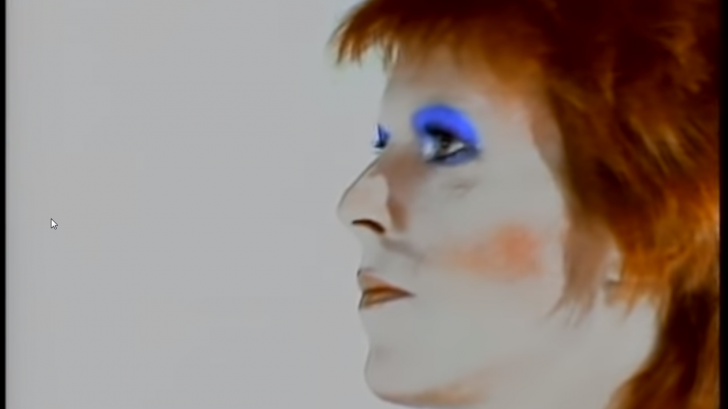Ever since he appeared on the creative scene, David Bowie always considered himself a writer and composer, not so much a musician. He began his career creating songs and texts for others, focusing his activity on musicals and theatrical works. However, over time he revealed himself as a true showman, an animal that gave everything on stage, with a personality and looks that made him the perfect and transgressive artist that everyone wanted to see live.
Throughout his career, Bowie experimented with many and varied characters. Each album, each creative stage, asked him for a different interpretation, and the White Duke adopted as many identities as there were ideas in his head. In The Man Who Sold The World we met his facet closest to androgynous rock glam, and then we would meet his other great alter egos, Major Tom and Ziggy Stardust. It was not easy for Bowie the process of getting on stage and opening up to the public, and for that, he knew how to cover himself with different personalities, the most eccentric, to feel comfortable.
Ziggy Stardust
He is the most momentous character in Bowie’s career. He appeared in 1972 on his album Ziggy Stardust and the Spiders From Mars, and he was the last alien from the Bowie space rock, who warned of the little time remaining on our planet. Like an omniscient storyteller, come down to tell us how resources are running low. He was a very thoughtful and mature character, with that characteristic red hair and a retro-futuristic aesthetic that has been imitated to infinity.
Aladdin Sane
The musician rose to fame, but that didn’t stop him from developing other personalities. Aladdin Sane was his sixth album, released in 1973, and it was an evolution of Ziggy as if he moved to the United States and was influenced by the styles that reigned there. The new character had a tougher attitude than the previous one, was more rocker, and has even been considered by critics as a tribute to the Rolling Stones.
Alladin Sane has always been interpreted as a pun to represent mental health. Bowie’s brother was schizophrenic, and somehow he was always very interested in such illnesses when composing to reflect it in his songs. The Man Who Sold The World is a good example of this trend.
https://www.youtube.com/watch?v=ENOBSPh_uBA
Halloween Jack
He was a character created for the 1974 Diamond Dogs album and tour. It appears on the album cover and is mentioned in songs. Like Aladdin Sane, this new personality is just another mutation of Ziggy Stardust, one that inhabits the dystopian world that emerged after the war. He is described as a ‘cool cat’ living in Hunger City, inspired by George Orwell’s 1984 novel.
Halloween Jack is more cartoonish and less theatrical than Ziggy. He wore an eye patch and dressed in other androgynous pirate clothing. “We did the Diamond Dogs tour from New York to Los Angeles and we thought it was enough. Instead of coming back with the same thing, he wanted to give me the opportunity to work with the band,” Bowie told Dick Cavett on the talk show.
The Thin White Duke
When he landed in Philadelphia during The Diamond Dogs tour, he was carried away by American soul, funk, and dance music. This exposure to the Philadelphia soul scene would culminate in Bowie writing 1975’s Young Americans.
The character was not fully realized until his 1976 album, Station to Station, in which the name is referenced in the title track. At this point, the character became much more sinister and dark. He began to develop a serious addiction to cocaine and allegedly also flirted with black magic, fascism, and developed a deep fascination for Adolf Hitler. Bowie began to look back to Europe for the future of music, ending up in Berlin, Switzerland, and France to record Low, Heroes, and Lodger.
The Blind Prophet
David Bowie’s latest album Black Star was released just two days before his death, making the release that much more epic. The album paid tribute to the star’s creative life, with many of the songs revisiting familiar dystopian environments that she has explored many times before.
When the music videos for two of the songs, Lazarus and Blackstar, came out, they revealed a new character that was in both of them. It was a man with a bandage over his eyes and two black buttons placed where his eyes would be. One cannot help but wonder that perhaps the blind prophet is Bowie’s acknowledgment of his impending death and thus his mortality.

